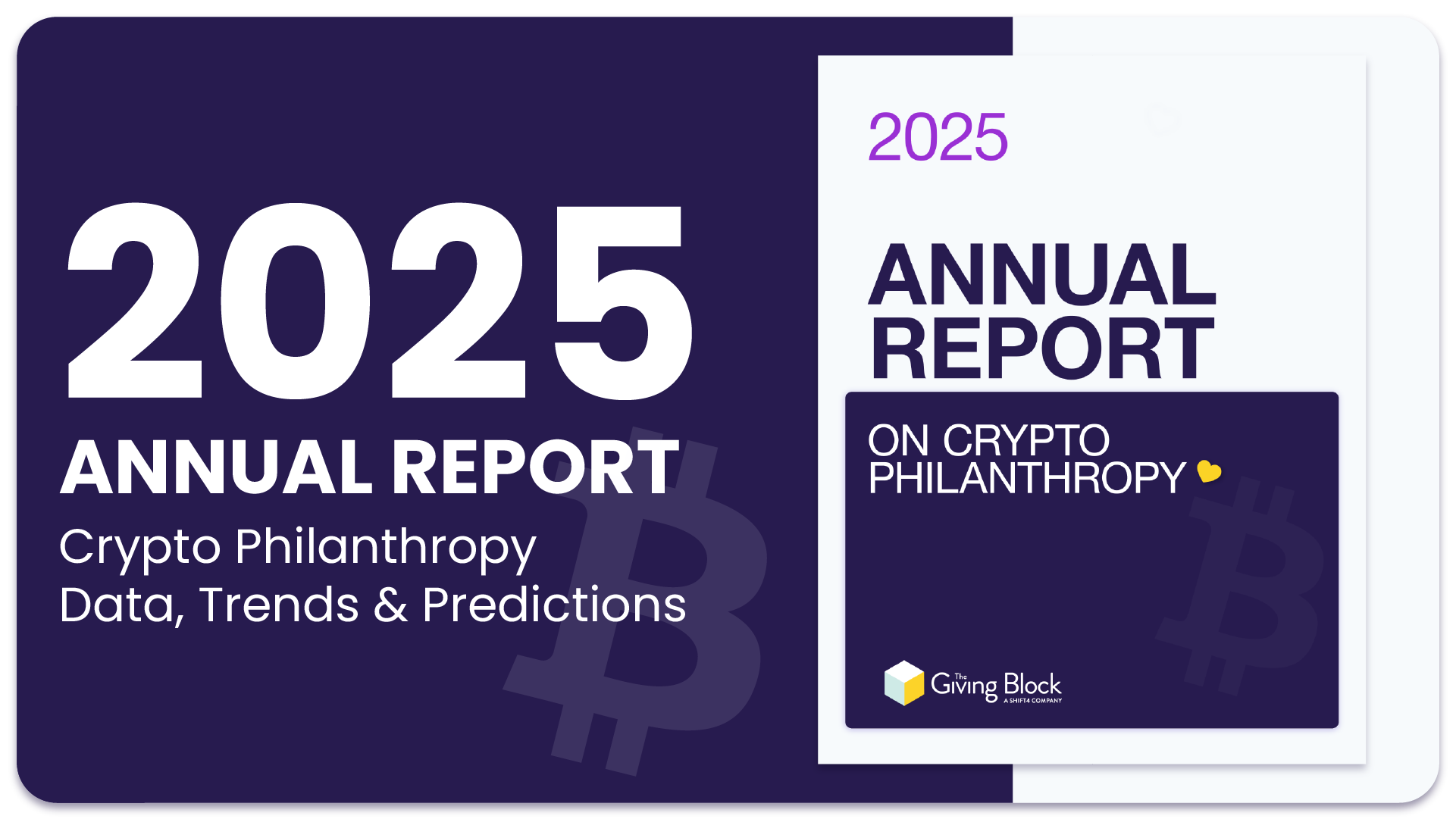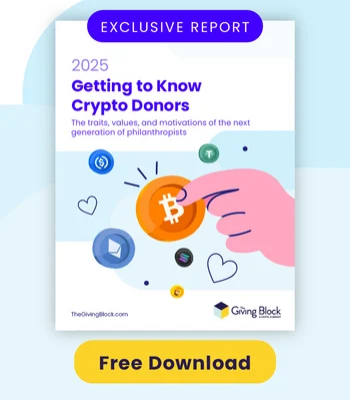While direct mail appeals may never go extinct, 63% of donors in the U.S. and Canada prefer giving online. Our lives are increasingly digital, and for nonprofits, that means online donation forms are an absolute must.
Fundraisers have countless tools at their fingertips that promise to help increase revenue from their online fundraising. But which tactics can make the difference for your organization? Understand your options with this rundown of five fundamental strategies.
What is Online Fundraising?
Online fundraising is the method nonprofit organizations use to raise money over the internet. Today, nonprofits use multiple communication channels and tactics to steward various forms of digital donations.
5 Online Fundraising Best Practices for 2025
From P2P to SEO, there are five essential strategies for achieving online fundraising success:
1. Activate (or re-activate) your social platforms
A 2020 study found that 25% of donors were most inspired to give by social media content. Building a strong presence on social media is one of the most cost effective ways to grow your following and reach current supporters.
Perhaps it’s no surprise, then, that a whopping 87% of nonprofits worldwide use at least one social media platform.
Wondering if you really need to post on social platforms? Perhaps your organization serves a small or local community, or doesn’t rely heavily on individual donations. Well, consider that 4.9 billion people are connected via social media, and most of them have multiple accounts that they check daily. Posting regularly can help you amplify your message and acquire new donors over the long-term.
Globally, the average person has 8.4 social media accounts and spends 145 minutes on social platforms every day.
Though posting and/or tweeting might seem simple, getting effective results from social media is a constant challenge. And given the ever-changing nature of social media (e.g., algorithm changes, new features and competing platforms), nonprofit marketers and fundraisers feel enormous pressure to try out new tactics frequently just to keep up.
So how do nonprofits make the most out of social media efforts?
On social, as with anything, applying solid fundamentals in your approach is the key to a winning formula. The following evergreen ideas aren’t going out of style anytime soon:
- Be active on several social platforms
- Post unique content on each platform
- Diversify your messaging
- Launch a cross-channel campaign
- Advertise on social media
All in all, maintaining an active social presence is essential for online fundraising. These channels will help you grow your supporter base over time, which can in turn help you achieve your mission for years to come.
2. Build an SEO strategy to increase organic traffic
If social media posting is like a sprint, then search engine optimization (or “SEO”) is more like a marathon. Both are online tactics that can boost your nonprofit’s visibility and help land you more donations.
But while the lifespan of a social media post is somewhere between 15 minutes and 48 hours, a good SEO strategy can generate years of passive organic traffic from content you’ve already published.
As the name suggests, SEO is a method of writing and formatting web content in order to align with user search keywords, with the aim of boosting how high your page (and site overall) appears in search engine results. For a keyword with high search traffic, the top result can be a goldmine for new organic web traffic to your site.
The #1 organic search result is 10x more likely to receive a click than the #10 result.
A large portion of your organic web traffic likely comes from searches for “branded keywords” such as the name of your nonprofit. But with a methodical SEO strategy, you could also build authority around topics related to your mission, which can help your website appear high in relevant keyword search results.
SEO can involve various types of content including blog posts, company news updates, and landing pages. Once your content is published, you can also use off-page SEO tactics to help generate more traffic to these pages. Done well, a variety of tactics will gradually build your search ranking authority.
Aside from your organization’s name, there are plenty of popular search keywords that can be worked into your SEO strategy. Let’s use a nonprofit focused on cancer research as an example:
- How to donate to cancer research
- New cancer research breakthroughs
- Cancer charities to donate to
- Best cancer charities
- Why is cancer so hard to cure
As you can see in the example above, your SEO strategy can incorporate keywords that are directly or indirectly related to your mission. It depends on how wide of a net you wish to cast with your SEO efforts. Tools like SEMRush, Moz, Ahrefs and Google Keyword Planner can help you hone in on the perfect keywords.
Keep in mind that the more relevant your content is, the more likely that it will attract the ideal reader that may be interested in your cause.
3. Empower supporters to fundraise for your cause
It’s generally thought that getting a second gift from a donor is one of the most difficult tasks fundraisers face. If you feel the same way, it’s a good time to consider how peer-to-peer campaigns can help.
An estimated 14% of those who gave to a peer-to-peer campaign participated in subsequent fundraisers for the same organization. Perhaps there’s something to this socially-motivated form of giving?
Peer-to-peer (aka “P2P”) fundraisers turn your biggest champions into fundraisers who tap into their own personal and professional networks to benefit your cause. These individuals can be part of your young supporter base, paid or volunteer influencers, or even your most generous major donors.
Best of all, these personalized fundraisers are highly effective. Your fundraising donors may raise more than they can personally give in a single year, and that’s a good thing for both your short-term revenue generation and your long-term donor relationships.
Personal online fundraisers raise an average of $391, with an average gift size of $91.
Establishing a peer-to-peer fundraising protocol for your nonprofit isn’t just about the bottom line. It’s also a fantastic way to reach more younger donors. Gen X, Millennials and Gen Z are the ideal targets for peer-to-peer fundraisers due to their comfort with digital giving and social platforms.
Some organizations have reasonable concerns about lack of control over messaging. But peer-to-peer fundraising is a net-positive for most nonprofits because it can:
- Deepen your relationships with existing supporters
- Save time for your fundraising team
- Grow your network of supporters for free
- Boost donor acquisition and second-time donors
- Raise money quickly for your organization
Knowledge on demand: Get expert tips from our peer-to-peer fundraising webinar.
4. Segment your donor email lists
No matter if you’re sending off a weekly newsletter, a monthly donor impact update, or a year-end fundraising appeal, you’ll need the same thing: a dedicated email list.
Creating different types of email lists unlocks the next level of targeted fundraising outreach for your nonprofit. According to several studies, email has 4x the ROI of social media, while segmented emails can increase click rate by 15%.
Segmentation of your email lists also ensures that your contacts don’t think of your messages as spammy, irrelevant or offensive. You wouldn’t want to send your biggest donor an appeal for $5 donations, would you? (But that type of message could work to win back a lapsed donor.)
What it bottles down to is that segmentation is all about delivering the right message to the right audience. And that formula helps increase open and click rates, which of course increases the probability that readers will give to your cause.
The average email open rate is 20.5% for the nonprofit sector.
If your organization suffers from below-average email open rates, one of the first steps you should take is to review your donors lists. It may be time to refresh them or start over with new lists that better reflect your relationships with various contacts.
Depending on your mission and work, your core email segments you could include:
- Active volunteers
- Newsletter email subscribers
- Lapsed donors (e.g., LYBUNT and SYBUNT)
- Donors at each giving tier (e.g., small gifts, major gifts, etc.)
- Contacts by demographic (e.g., geography and age)
Bottom line? With proper list segmentation, email can recover unengaged contacts and create more personalized experience for your network. And those kinds of results are simply too good to ignore.
5. Offer more ways to give to your mission
Every year, the average donor likely sees hundreds of requests for cash donations, via direct mail, email, or social media. The underlying wisdom is that cash is readily available, easy to give, and easy to process.
But did you know that only asking for cash can actually limit the size of the donations you receive, and even put your nonprofit on a slower revenue growth trajectory?
Many fundraisers are overlooking or missing a crucial insight discovered by philanthropy expert Dr. Russell James: when it comes to charitable donations, cash isn’t king.
89% of wealth is held in non-cash assets like crypto and stock.
In addition to cash donations, fundraisers should offer non-cash asset giving options. By giving non-cash assets, your donors have more options for tax-efficient giving, which in turn can increase the amount that can give to your cause.
The classic reputation of non-cash giving (bureaucratic, hands-on, reserved only for select major donors) is hard to shake for some fundraisers. But today, the process of accepting non-cash donations is an integrated part of digital fundraising.
Let’s break down the benefits of non-cash asset fundraising:
- More favorable tax benefits for donors.
- Major gift opportunities for your organization.
- Diversified giving options for donors.
- The chance to reach new donor demographics.
- A more comprehensive digital giving experience.
Non-cash fundraising encompasses cryptocurrencies, stock shares, and donations from Donor-Advised Funds, which are increasingly funded with non-cash assets.
We realize that non-cash fundraising may require a little bit of education. We’ve put together a guided course on the subject. Sign up for free and become a savvier fundraiser today.
Take Your Digital Fundraising to the Next Level
Making the same appeal to the same donors year after year has diminishing returns.
Adaptability is the key to fundraising, whether your goal is to increase donations at the end of year or year round.
Today’s donors want a digital giving experience that reflects their preferences. Increasingly, donors want more than one way to give.
Offering crypto, stock and Donor-Advised Fund donations can help you acquire new donors and unlock larger gifts.




















